10 Animals That The World Is Eating Into Extinction

- Three hundred one species of mammals are facing extinction due to the insatiable appetite that humans have for bush meat.
- Asian countries like China and Vietnam have the greatest demand for food derived from endangered animal species.
- Over 70 million sharks are hunted every year for their fins with the rest of their unusable carcasses thrown back into the ocean.
- Caviar, a dish made from sturgeon eggs, is one of the most expensive with a pound selling for $4,500.
The role played by humans in the extinction of close to 500 animal species since 1900s is often underplayed. Whether it is the destruction of their habitat through deforestation or hunting them into oblivion for their fur and tusks, humans always find new ways of inflicting damage to the ecosystem without any regard to the impact of their actions. Another unfortunate practice that has been driving animals towards their total wipeout is hunting for food. Humans have been hunting for ages, purposely for sustenance. But it has now reached a point where some animal species are being eaten out of existence. Here are the ten animals that the world is eating into extinction.
Pangolins
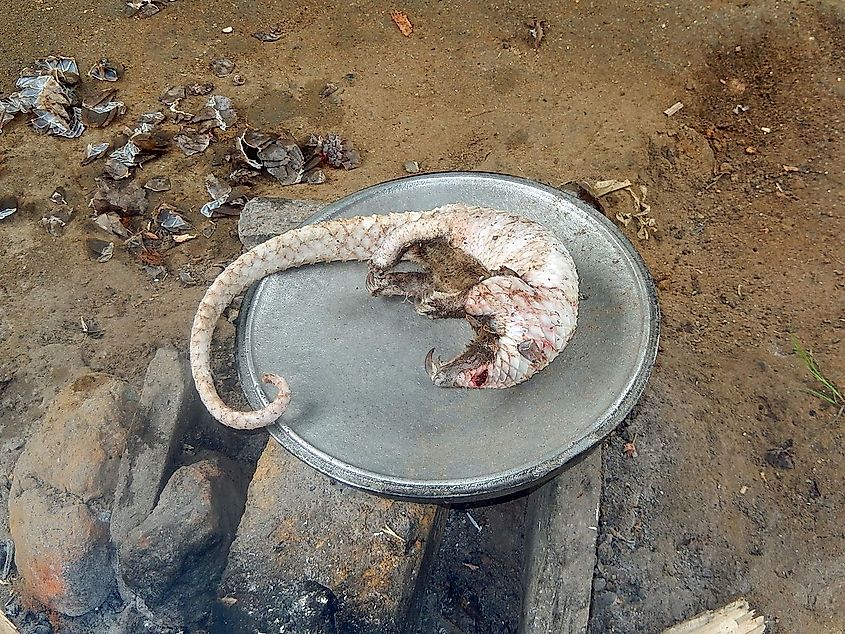
Pangolins are the world's most trafficked animals, and more than a million of them are believed to have been killed for food in the last 20 years alone. A delicacy in Asian countries like China, Malaysia, and Vietnam, pangolins are also hunted for their fresh blood and scales. There is an unfounded belief in most of the Asian nations that ground pangolin scales cure asthma and cancer, a misconception that has driven up their hunt. Of the eight pangolin species in the wild, four are listed as Vulnerable, two are listed as Endangered, and another two have been declared Critically Endangered.
Red River Turtle
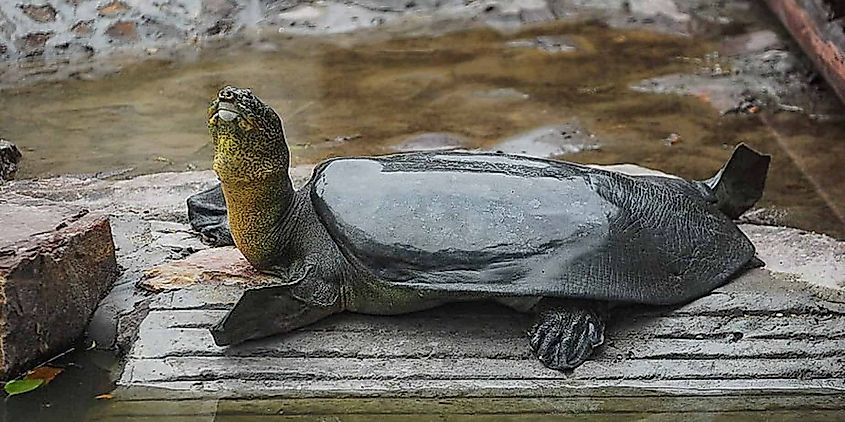
Locally known as the Yangtze giant softshell turtle. The animal was once found in all the major rivers passing through Vietnam and most of China. Only four living individuals are left, and the hopes of saving the turtle are getting dimmer and dimmer every day. The red river turtle has been hunted for its meat and eggs. Their bones are also on high demand and are used in medicine. Their skulls are kept as trophies by their hunters. Of the four individuals left, only one is a female, and efforts to breed them in captivity have not yet been successful.
Red Colobus
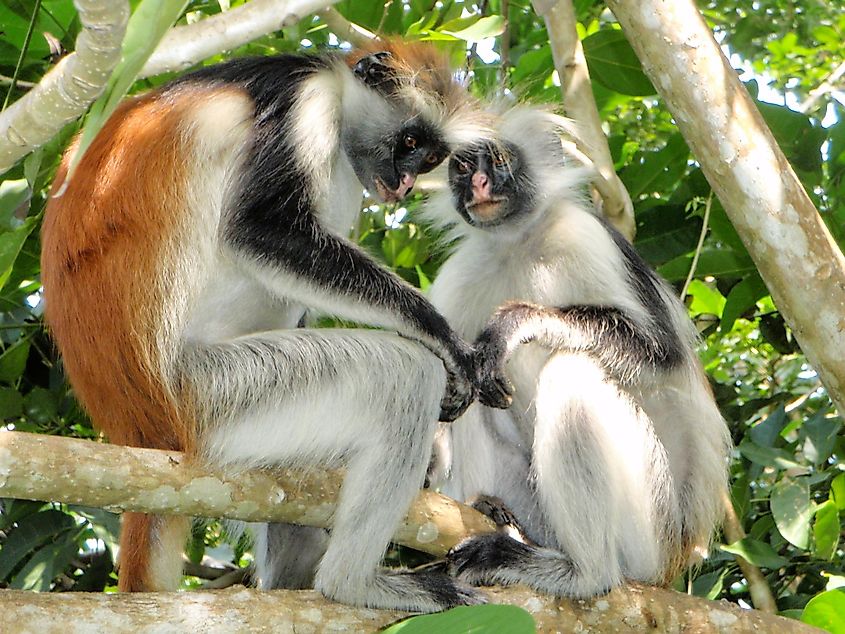
Red colobus monkeys are mostly in Eastern and Central Africa. It is a monkey that has had the misfortune of being hunted by both humans and chimpanzees. Chimpanzees live off fruits, insects, and vegetation, but when an opportunity to eat meat appears, it usually involves the hunting of red colobus monkeys. Humans have hunted the red colobus for their meat and beautiful coats.
Bluefin Tuna
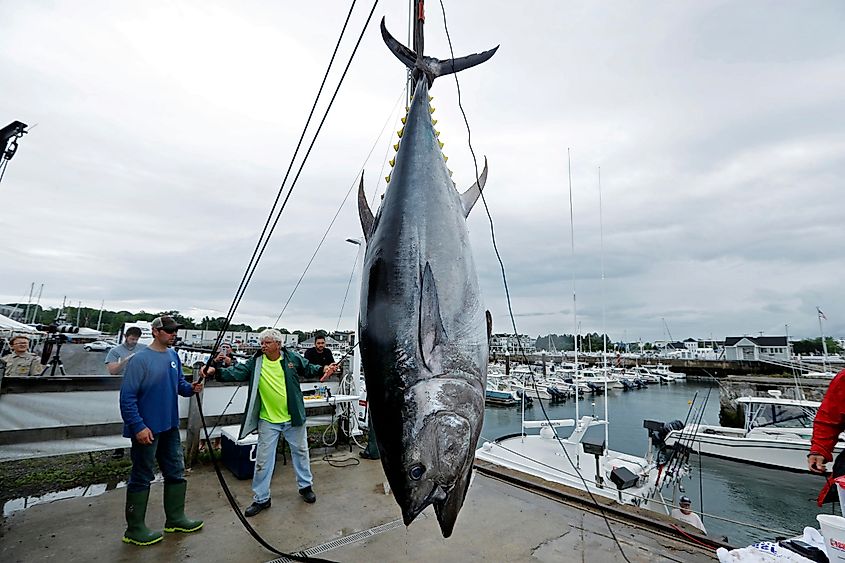
Bluefin tuna is one of the fastest fish species in the ocean with speeds that can hit 40mph. They can grow up to 14 feet long and weigh around 1,800 pounds, making them the perfect fish for the perfect meal. High demand for sushi and sashimi has pushed bluefin tuna populations to the brink of extinction with their status switching between Vulnerable and Critically Endangered from time to time. Lack of International laws to protect the bluefin tuna and the fact that they take too long to grow in fish farms has led to overfishing. Soon the Atlantic Ocean will no longer have them.
Chinese Giant Salamander
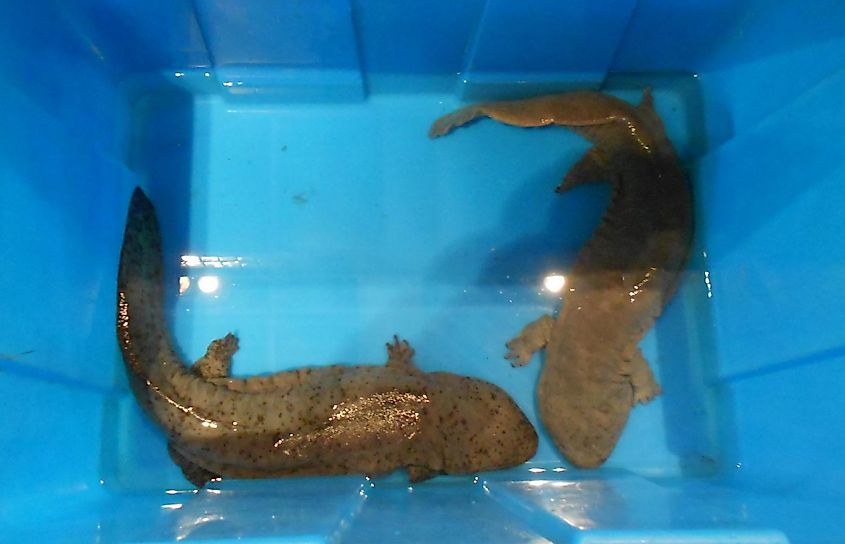
With a length of almost six feet and a weight of approximately 140 pounds, the Chinese giant salamander is the largest amphibian on the planet. Unfortunately, the salamander is a considerable delicacy in China, and this has pushed their numbers to the limit. The large amphibian is now listed as Critically Endangered. There are nearly 50,000 individuals left in the wild and about 2.6 million in different breeding farms run by big restaurants. The downside to keeping the salamanders in restricted spaces is that diseases are spreading faster and are passed on to the populations in the wild, further endangering them.
Sturgeons
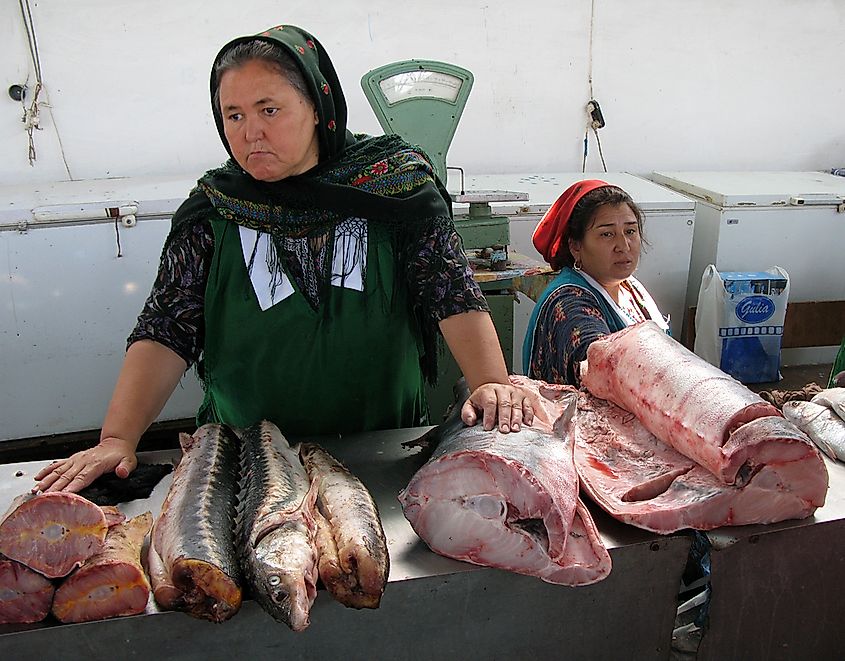
Sturgeons have been around for over 200 million years, and they have survived countless mass extinction events only for them to be driven to the brink of a total wipeout by humans. Sturgeons are aggressively hunted for their eggs, which make caviar, one of the most expensive dishes in the world that usually fetch an impressive $4,500 per pound. The caviar rush of the 1800s almost pushed sturgeons to extinction until intervention saved them. They have steadily raised their numbers but are still being hunted for their meat and eggs.
Eastern Lowland Gorilla
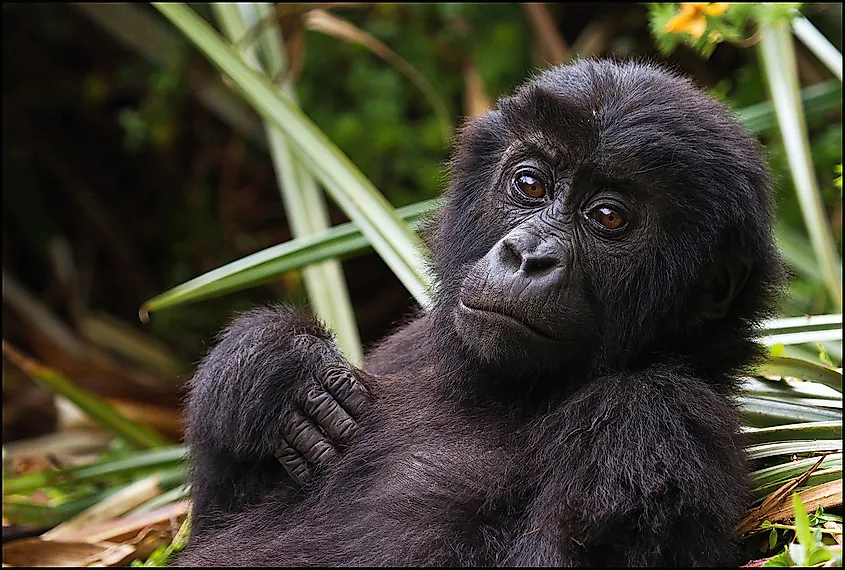
It is a cousin of the mountain gorilla. The eastern lowland gorilla is being hunted in the Democratic Republic of Congo for its meat. With no other predator, the gorilla was once spread out across the Central African jungles but has seen its population reduced by about 77% in a single generation. There are roughly 3,800 individuals left in the wild. Consumption of bushmeat in DRC is considered a wealthy indulgence. The demand has encouraged poaching. Similarly, instability in the region has hampered conservation efforts.
Sharks
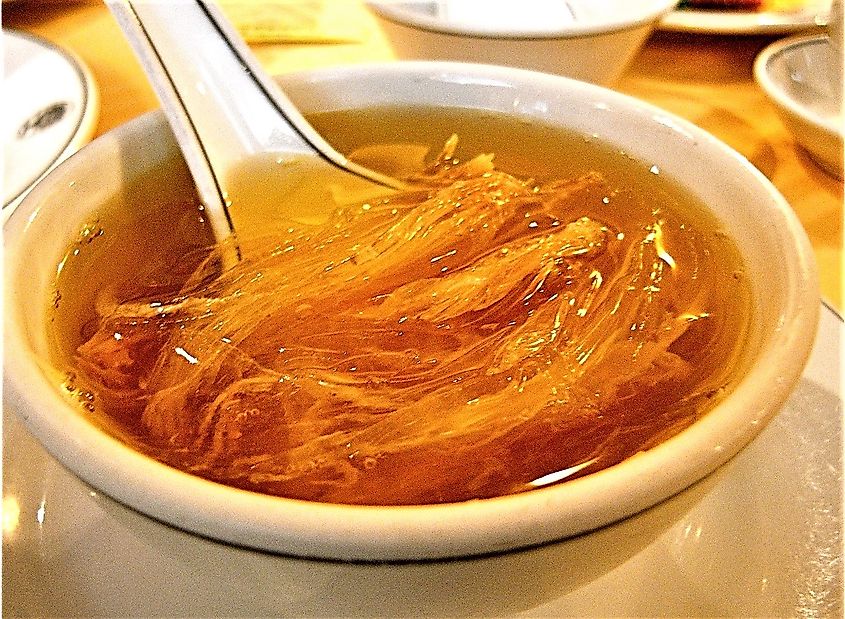
The indiscriminate killing of sharks to obtain their fins before tossing the rest of their carcass back into the water has to be the most despicable human acts against nature. The practice of eating shark fin soup dates back to the Ming Dynasty in the 1300s, where it was viewed as a symbol of status and power. The worst-hit is the shortfin Mako shark. Driving this hunt for sharks is China, where shark fin soup is seen as an elite dish for the wealthy with a bowl going for more than $100. More than 73 million sharks are killed annually just for their fins.
Green Sea Turtles
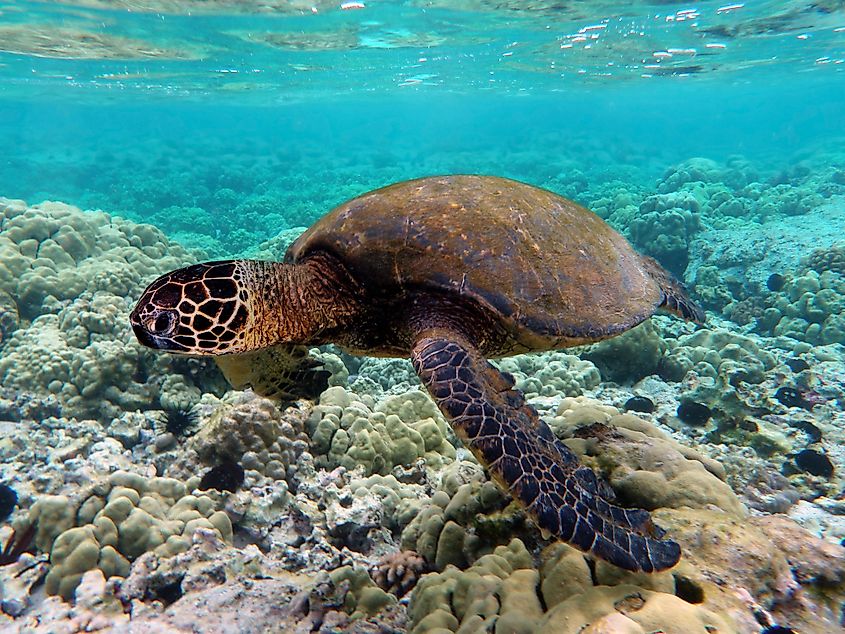
Even before humans started hunting them in large numbers for their meat, shells, and eggs, green sea turtles were already grappling with pollution, being caught in fishing nets meant for others and habitat loss. They have been hunted for the illegal trade, particularly in Asia, where their body parts fetch high prices, and their meat and eggs are a coveted delicacy. Their shells are believed to have medicinal powers in some African cultures. Although they were accorded protection in 1977, they are still being hunted in large numbers in Africa and South Asia.
Muskox
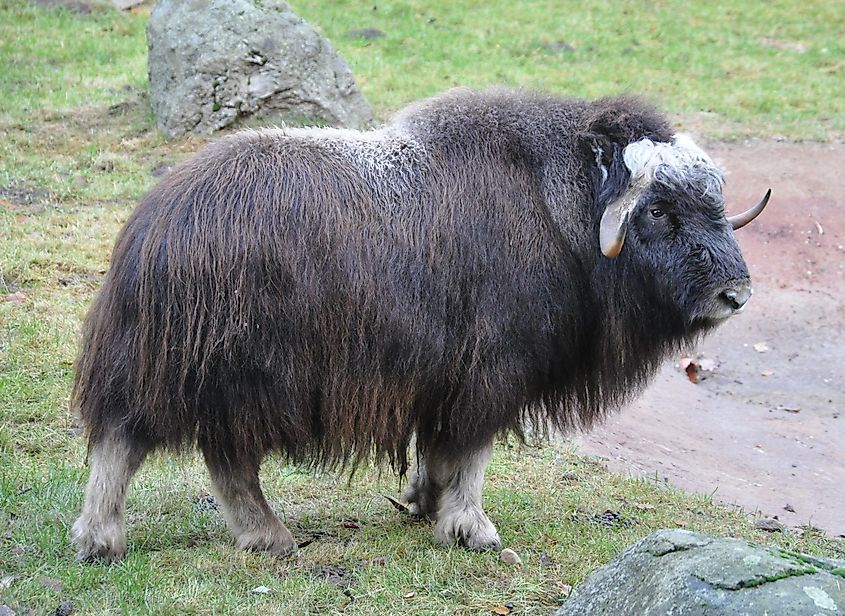
The muskox weighs over 900 pounds, and at one time they were widespread in North America and Siberia, and together with the bison, provided food for the Native Americans. However, the situation changed with the arrival of Europeans who had deadlier hunting weapons. Between 1900 and 1930, the muskox was almost driven to extinction by excessive hunting for their meat and hides. There are 80,000 muskoxen left in the wild now.
Others
Other animals that are barely holding on to their existence in the face of hunting include the Great white shark, the largest predatory fish on earth, which is facing a threat called finning. The flying fox is the largest bat species on earth with a wingspan of up to 6 feet, and is being hunted for its meat and sport. The Whale shark, the largest fish in the ocean, has been on the Critically Endangered list for about three years now because of excessive hunting. They are hunted for their meat, fins, and other body parts used for medicinal purposes. The Indri, a Madagascan lemur, is currently facing wipeout thanks to the increase in poaching, which is driven by starvation in the country. The European eel is being overfished in the oceans and has seen their stocks dwindle by half in the last 50 years.
Critical Statistics
The human culinary habits are a direct threat to the survival of a staggering 301 land mammals. Of these, primate species facing extinction as a result of our eating habits are 168 primates, 26 species of marsupials, 21 species of rodents, and 73 species of hoofed animals. Bushmeat is so vital in Congo that it accounts for almost 80% of the protein intake in the region. It is estimated that over 6 million tons of bushmeat are sourced from the Congo Basin despite the international ban on their trade. The Red List now has an estimated 1,414 species of fish listed as endangered because of overfishing.
According to the World-Wide Fund for Nature, the modern-day human eats 42 pounds of fish on average in a year, which is two times more than what he consumed 50 years ago. As things stand at the moment, over 60% of fish stocks in all the five oceans have been fully exploited. Another 30% is already over-exploited. Fish numbers will not be able to hold on for long, and if this continues, oceans will be empty in the next 50 years.
What Can Be Done?
Harsh penalties need to be devised to deal with the illegal poaching and trafficking of endangered animals. Humans need to find other sources of nutrition so that they can allow the depleted numbers of animals in the wild to be restored. Fishing regulations need to become tighter and stricter to protect fish populations in the ocean. New ways of enforcing bans on practices like finning need to be implemented to stamp them out permanently. Communities living near the endangered species have to be sensitized on the impact of their actions and what could happen if they continue hunting the animals. Poverty is one of the many reasons that push people into poaching. Once they are aware and empowered with new sources of income, then the animals can be spared.











